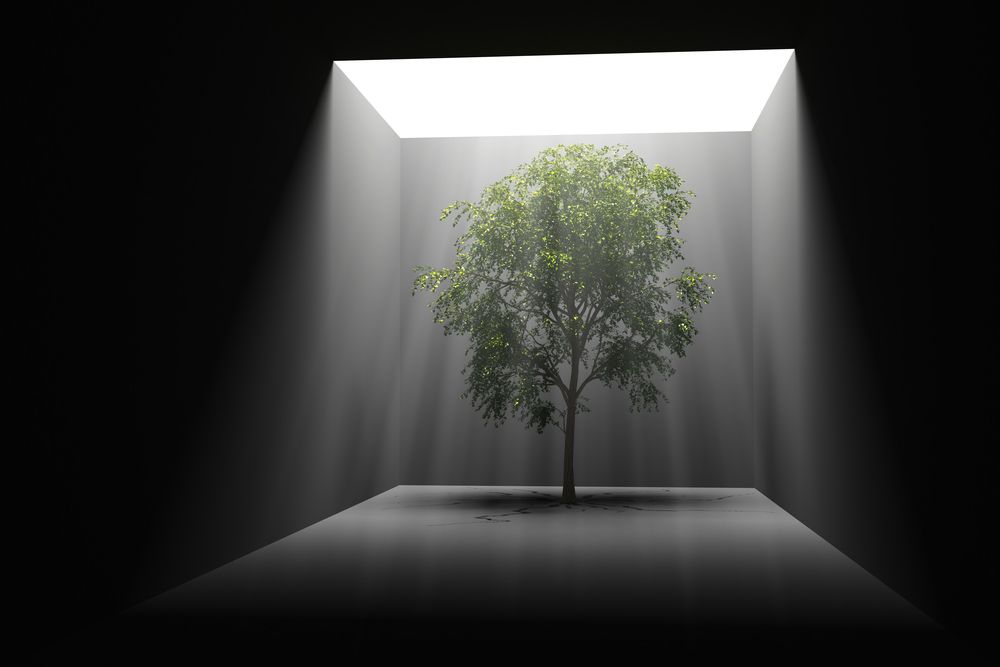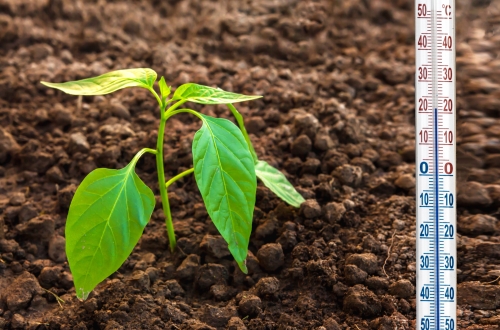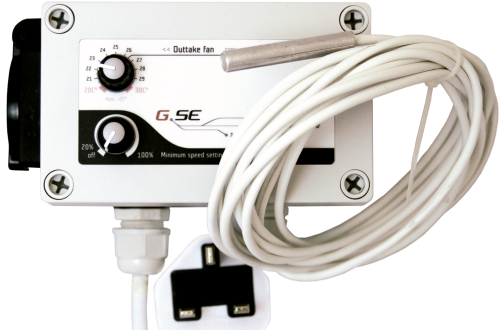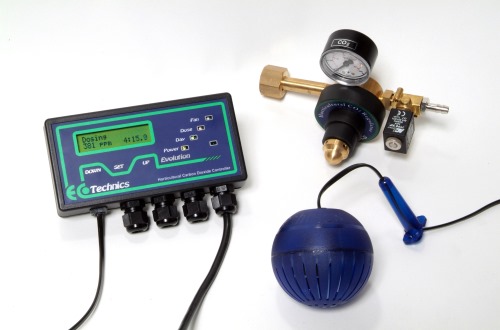Growing Conditions
It is possible to set up an indoor growing area just about anywhere in your house, shed or garage. Here are a few suggestions of places that might be suitable and point out some of the plant’s essential needs that must be taken into account when setting up.
To understand just what your plants require, imagine a sunny corner of the garden on a calm summer’s day. Most plants will grow well in the conditions that prevail on an English summer’s day and these are the conditions that need to be recreated in an indoor growing area. We have grouped the growing conditions under the four headings of Light, Temperature, Humidity and Atmosphere.
Make your grow room a plant paradise
"Gardeners instinctively know that flowers and plants are a continuum and that the wheel of garden history will always be coming full circle".
Francis Cabot Lowell

Light is the single most important thing for you to consider. Obviously, if you wish to grow plants in your basement for instance, you will have to provide all the light yourself and you will need to provide a lot if you are to recreate the conditions of a summer’s day. Fortunately, modern horticultural lighting is more than capable of doing this in an efficient and cost effective manner.
One can start by assuming that you have no natural light whatsoever in your chosen growing area. Obviously, if you have a window or skylight, this will reduce the amount of light that you have to provide but in most cases, this is not especially significant. There are other problems associated with using natural light, such as the inability to control the hours of darkness. The easiest and most efficient way to grow plants indoors is to do it in a dark area and provide all the light yourself. For greenhouse growers, the need to use extra light is limited to the darker months of the year.
Another thing to consider under the heading of light is the level of reflection in your growing area. A well designed grow room will get the maximum benefit from the light that is used in it and it is of great importance to get the best reflection of available light.

Temperature is another important design parameter of your grow room and it is something that must be borne in mind from the beginning. Most plant species will grow most effectively in the temperature range of 20-28°C, the mid-twenties being optimal. It will not be difficult to maintain this sort of temperature in your room while the lights are on as they are a great source of heat as well as light.
If temperatures should become too high, a simple extractor fan should serve to reduce them. This extractor can be easily linked to a thermostat to ensure that your room never reaches the high temperatures that can have a negative effect on growth rates. When your lights are off, however, you can expect a gradual decline in temperatures. In the colder parts of the year, they will drop well below the ideal growth range.
Recent research has shown that night cycle temperatures are just as significant as day cycle temperatures in plant production and it is in fact the relationship between them that has most effect on the final shape and productivity of the plant. It is important to avoid large temperature fluctuations between the day and night cycles as this can lead to weak and poorly formed plants. It is ideal for most species to try and bring day and night temperatures as close together as possible and this is not as difficult as it sounds.

Humidity is another important consideration in grow room management. If it is allowed to get too high for prolonged periods, it will cause problems both in your room and among your plants. The main danger is the development of Botrytis or grey mould among the flowers or fruit. This organism thrives in conditions of high humidity and will quickly spread and ruin a crop. Plants of the melon family and strawberries are particularly susceptible to fungal diseases and should be provided with a dry environment.
The cautious grower will always monitor the humidity in his grow room which is measured by another simple device called a hygrometer. This is a dial type instrument that can be mounted on the wall next to the Max-Min thermometer and will give a constant and accurate reading of humidity. The ideal humidity for normal plant raising would not be much above 50%. If it rises above this, the grower will normally operate his extractor fan until it has been reduced.
To keep this potential problem under check, it is advisable to avoid leaving water on the floor which can then evaporate and raise humidity. Any water or nutrient solution that spills or overflows should be wiped up promptly and nutrient tanks should be covered at all times. Any water that is left exposed to the heat from your grow lights will rapidly evaporate and add to the humidity levels. Keep your greenhouse or grow room dry.

The fourth variable that needs to be taken into account at the design stage is the atmosphere or air in the grow room and it is here the grower is often faced with a dilemma. On the one hand there is a strong requirement for a continuous supply of fresh air. Growing plants need a constant supply of carbon dioxide to maintain growth. CO2 is present in normal fresh air at the rate of around 330 parts per million (ppm).
If you try to grow plants in a closed and sealed room you will quickly run into problems. As the plants grow they will rapidly use up the available CO2 which can drop to less than a third of normal levels within one hour. At this point, plant growth will effectively cease. To maintain normal atmospheric levels of this essential gas, the grower would be advised to run an extractor continuously as well as providing an input point, such as an open door or window, for the fresh air to enter the room. The problem with this of course is that the extractor will reduce temperatures and the grower may not wish to run it any more than necessary to maintain temperatures in the desired zone. It may also not be convenient to leave a door or window open on a long term basis.
Fortunately, modern technology has provided simple answers to the grower’s dilemma as carbon dioxide can be added to the atmosphere in the grow room which reduces the need for fresh air being brought in. CO2 can be introduced from bottles which can be rented from Esoteric Hydroponics, or it can be produced by burning propane.
Check out our product range here
Want to get in touch? You can email us: enquiries@growthtechnology.com
Your login details have been used by another user or machine. Login details can only be used once at any one time so you have therefore automatically been logged out. Please contact your sites administrator if you believe this other user or machine has unauthorised access.

